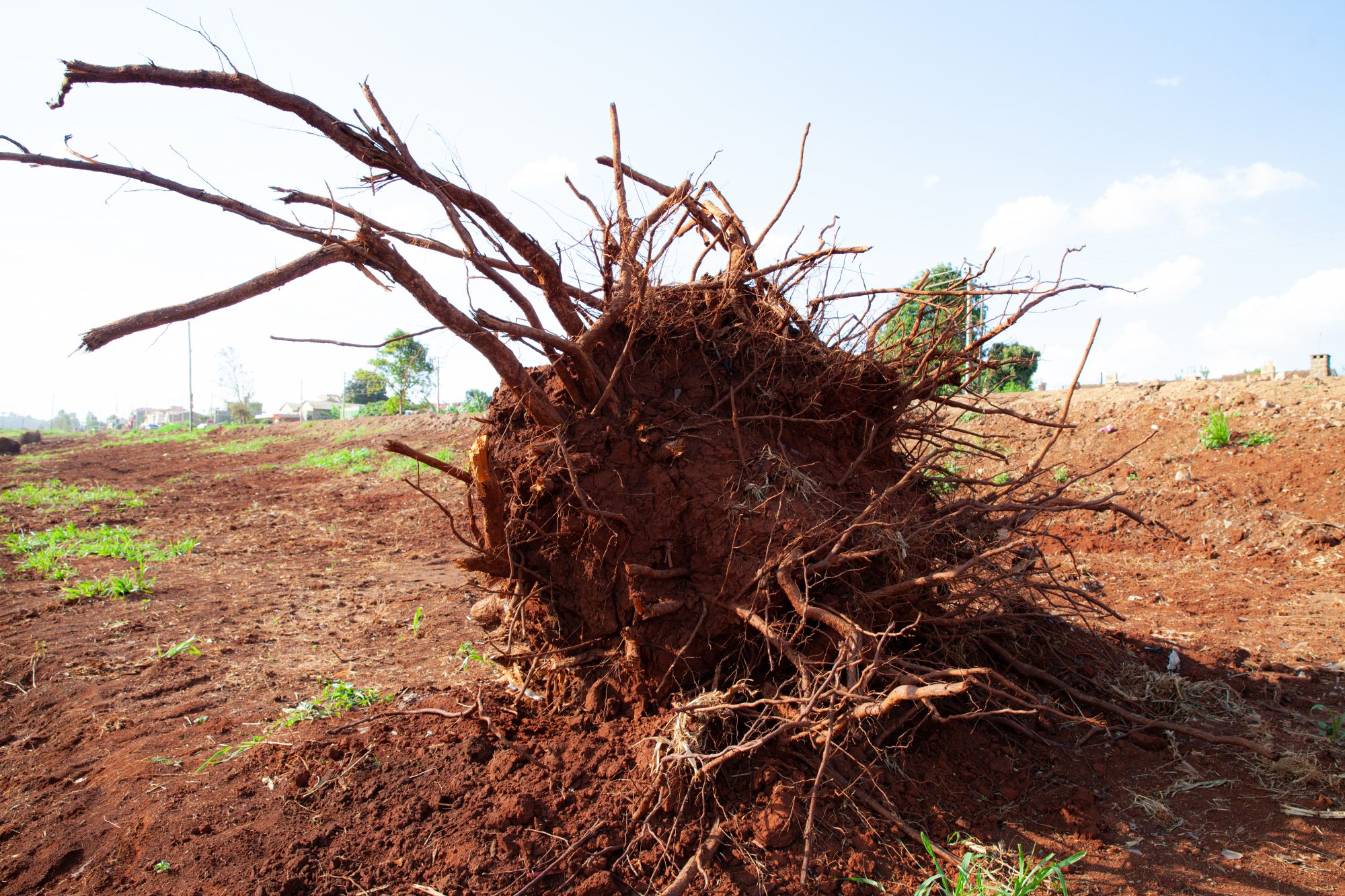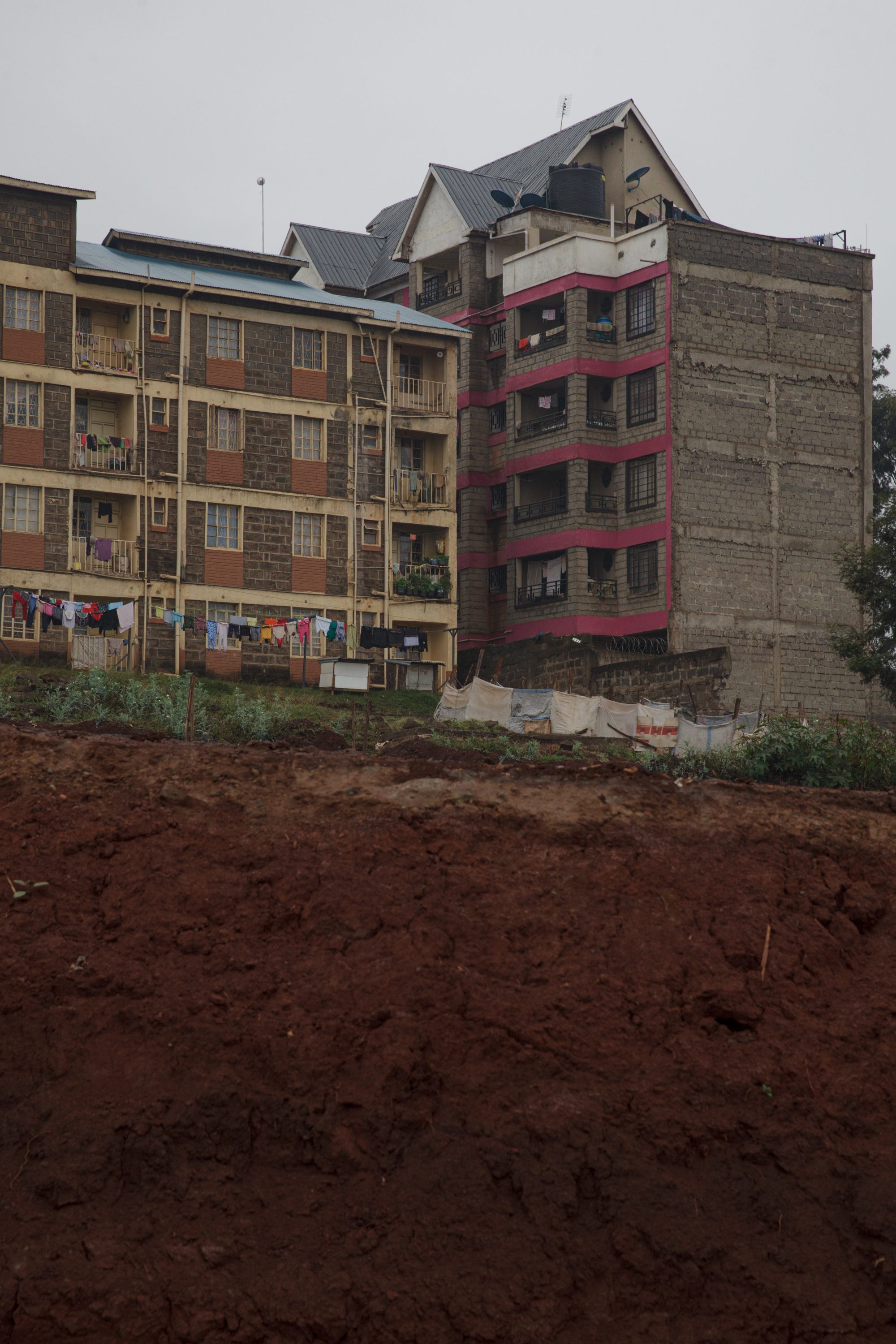REPORTS
- ワークショップ
ジェームズ・ムリウキ 往復書簡プロジェクト「Round-trip Letters」2-1 from ジェームズ・ムリウキ
Editor: ジェームズ・ムリウキ プロジェクトメンバー

REPORTS
Editor: ジェームズ・ムリウキ プロジェクトメンバー

プログラム2「表現編」の招聘アーティスト/キュレーターである、ケニア在住のジェームズ・ムリウキとオンラインで展開する往復書簡プロジェクト「Round-trip Letters」。当初は奈良でフィールドリサーチやレクチャーの実施を予定していましたが、新型コロナウイルスの感染拡大により渡航・入国が困難となっている現在、遥か遠くに暮らすジェームズに、ケニアの状況や今考えていること、プロジェクトの構想について手紙にしたためてもらい、プロジェクトメンバーと文通を行いながらプロジェクトを遠隔で進めていくことになりました。前回プロジェクトメンバーが送った手紙を受けて、ジェームズから返信が届きました。
Question 1-1:
手紙に書かれていたマンチェスター大学との共同プロジェクトに関する下記の一文ですが、あまり充分には意味をつかむことができませんでした。 They would be asked to provide audio records, video records using their smartphones and/or photographs of specific interventions they find as alterations to what they have experienced before. この「specific interventions they find as alterations to what they have experienced before」という箇所ですが、具体的には新型コロナウイルスの流行後に、ライフスタイルが変化したことを意味しているのでしょうか。
Question 1-1:
There is a sentence about your collaborative project with University of Manchester, of which we cannot fully understand the meaning as below. They would be asked to provide audio records, video records using their smartphones and/or photographs of specific interventions they find as alterations to what they have experienced before. Does the words “specific interventions they find as alterations to what they have experienced before” especially mean changes of lifestyle after the spread of a Covid-19?
Answer 1-1:
そのとおりです。とりわけ政府当局や地域コミュニティが意図的に導入した変化もあれば、個々人が取り入れた変化も含みます。これらの変化は、とても大きな層(WHOや政府による指令など)から、非常に小さな層(個人)まで、さまざまなレイヤーで起きていると考えました。
Answer 1-1:
Exactly. This is especially the changes that have deliberately been introduced either by government authorities, the community of people living with and around them, as well as what they are personally introducing as changes. I imagined these changes would occur in layers from very big “circle” (WHO directives and governments) to a very small circle (personal)
Question 1-2:
もしそうなら、新型コロナウイルスが広まってから、あなたの日常ではどんな変化がありましたか。日本でも、外では常にマスクをしたり、空間や物や手をいつも消毒したり、互いにソーシャルディスタンスを心がけたり、客と店員の間には透明なプラスチックの板が置かれたりなど、たくさんの変化があります。
Question 1-2:
In that case, what kind of changes you have experienced in your daily life after the spreading?Here in Japan, we also find a lot of changes: people always wear masks outside their home, clean and disinfect spaces, tools and their hands every time, ensure social distancing with each other, and you find clear plastic sheets separating customers and clerks anywhere, etc…
Answer 1-2:
最も大きな変化は、公共の場でのオープンな交流がないことです。他の人々が生活している様子を観察したり、公共空間で会話をしたりすることによって、私は学びを得たり資料収集を行ってきました。このような行為がほとんどできなくなったことで、アートを実践したり制作したりするプロセスに、多くの不確実性がもたらされました。 上記のことと関連するかもしれませんが、二つ目の大きな変化としては、観察の対象がソーシャルメディアに移行したことです。そこには有益な情報がたくさんあり、その多くはInstagramやWhatsApp、その他のメディアで投稿された視覚的なものです。ミーム(インターネットを通じて人から人へと、模倣によって拡がっていく行動やコンセプトなど)やその言葉は、私たちが集合的に経験している変遷について着想を得たり理解したりするための新しく拡張された場所として素晴らしく機能していました。 三つ目の変化として、私自身の近い将来の生計について考えざるをえなくなったことです。このことが私の心理的な状態に大きく影響を及ぼしました。私が取り組む予定だったプロジェクトはすべて延期になり、なかには無期限延期になるものもありました。このことはかなりの不確実性を意味しており、私の知り合いたちも影響を受けていることがわかりました。
Answer 1-2:
Certainly, the biggest is not having open interactions in public spaces. A lot of my learnings and material collection is through observing other people as they get on with their life activities, as well as having conversations in public spaces. This was very heavily reduced and brought in a lot of uncertainties within my process of doing and making of art. The other major change, which might relate to the one above is that observation shifted towards social media. There is a lot of instructive information, a lot of it visual that people were posting on Instagram, WhatsApp and other media. The memes and status text worked very much as a newly expanded place to source ideas and understanding of the transition we are all collectively experiencing. The third aspect is where I found myself thinking about the near future of my livelihood. This is mostly something that was affecting my psychological status. Projects that I was meant to work on were all delayed or pushed forward to an unknown time which meant a substantial amount of uncertainty, which I could see also affecting other people I know, some even more intensely than others.
Question 2:
たくさんのケニアのアーティストや芸術関係者が、新型コロナウイルス拡大後に助成金が一時保留されたりなど、困難な状況におかれたと述べていましたが、アーティストに対する支援はあるのでしょうか。たとえば、ケニア政府からアーティストへの経済的支援などありましたか。政府によるものでも、それ以外の組織でも良いので、ケニアのアーティストに対する緊急支援のイニシアチブがあれば教えてください。
Question 2:
Though you mentioned many Kenyan artists and cultural producers have experienced difficult conditions in that grants were put on hold after the spread of Covid-19, are there any supports to the artists? For example, has the Kenyan government offer financial resources to artists? Please let us know about any kind of emergency initiatives to the Kenyan artists by governmental or non-governmental institutions.
Answer 2:
ケニアには、主に販売するための商品として作品を制作しているアーティストがたくさんいます。この場では視覚芸術に限定して論じたいと思います。かれらのマーケット対象は、外国人コミュニティと観光客ですが、このマーケット区分はコロナの到来により大幅に縮小しました。より洗練された実力のあるアーティストは、地元と外国人コミュニティの両方の顧客を有するギャラリーに作品を委託することができますが、ギャラリーや顧客が公共スペースやアートスタジオに資金を援助するのをやめてしまったために、作品を販売したり観客の関与を得るために苦労しているアーティストもいます。 私を含めた何人かのアーティストは、リサーチに基づいた作品制作を行っていますが、個人的な他の稼ぎや助成金に頼ってきました。ケニア政府は、このようなアプローチをとるアーティストに対していかなる助成金も提供していません。新型コロナウイルス感染拡大の初期の数ヶ月間、これらの困難な時期にアーティストが「ケニア人を楽しませ続ける」ために、政府はいくらかのお金を用意すると発表しました。政府がそのように言及したアーティストは特にミュージシャンを指しているのですが、私が知っているミュージシャンは誰もこの助成金を受け取っておらず、その配布の手順を理解さえしていないことが明らかになりました。 このような状況にも関わらず、若手のアートディーラーによる「Tewasartスタジオ賃料支援イニシアチブ」のような素晴らしいイニシアチブもありました。この取り組みでは、有志やパトロンに基金への寄付を呼びかけ、彼が協働してきた何人かのアーティストのスタジオ賃料やその他の費用を支援していました。これは小さな寄付にすぎず、もっと多くの支援が必要だったし、今もそれは必要なのですが、それでも今後のアート支援についての素晴らしい提案であったと思います。
Answer 2:
There are many Kenyan artists producing work that is primarily a product to sell. In this discussion, I will restrict myself to visual arts. Among these, there are those whose target market is the expatriate community as well as tourists, a market segment that went on a massive slow down with the coming of Covid-19. Others who are more established are able to consign their work with a gallery where there is a mixture of audiences of both local and expat community, some of the artists still struggle to sell their work or to get the audience engagements since the galleries and visitors really stopped patronizing the public spaces and art studios. There is a few artists, including myself, whose creative work is research based and rely on other personal sources of earnings and grants for their work. The government of Kenya does not offer any grants for this kind of approach. In the early months of Covid-19 spread, the government announced that it was releasing some money for the artists to continue “entertaining Kenyans” during these difficult times. It came to be clear that, the artists so mentioned by the government were specifically musicians, of which none of the musicians I know received this grant, let alone understand the procedures and modalities of its distribution. Despite all this, there was a great initiative (Tewa’s Art studio rent relieve initiative) by a young art scout/ dealer, where he reached out to well-wishers and patrons to contribute to a fund that was going to help some of the artists he was working with raise studio fee or cover other expenses that they needed. Throught this, he was able to help a couple of artists from private donors, and also a small NGO approached him and supported an artist’s collective in a low income neighborhood. This was a small contribution to the art scene since a lot more was/is needed, but it sets an excellent proposal for arts support, now and in the future.
Question3:
日本におけるアートプロジェクトは、社会の成長志向に対抗するものとして機能する傾向があります。今回のコロナ禍は、社会の中で人間にとって大事な物事を改めて見つめ直すきっかけを人々に与えています。その意味で、アートプロジェクトが人々からより理解されやすくなったり、今後より求められるものになると感じています。一方でケニアは発展途上国のため、多くの人が先進国のように成長社会の実現を夢見ていると思いますが、ケニアの成長志向に対して、あなたはどのような生活あるいは作品をこれから実践していきたいですか。
Question3:
Art projects in Japan tend to function as a counter to the growth-oriented society. The Covid-19 pandemic gives people an opportunity to reconsider what is important to human beings in society. In that sense, we feel that art projects will become easier for people to understand and will become more demanding in the future. On the other hand, since Kenya is a developing country, we think that many people dream of realizing a growing society like developed countries. How do you see Kenyan future and what kind of life or work would you want to practice in response to Kenya’s growth orientation?

Answer3:
いつも北半球の言葉で「開発とは何か」が定義されてきたわけですが、そうなるとケニアは確かに「発展途上国」です。ケニアを含むアフリカの多くの人々は、開発という言葉が再定義されたり、あるいは全く無視されるような、別のありえるかもしれない世界について想像してきました。世界の北半球で確立されたものに代わるものを考えだすということは現実には非常に難しいのですが、これはとても重要な野心です。多くの場合、それは「先進国」によって承認され、管理されなければならないからです。
上述の点を踏まえると、今も、そしておそらくこれからも、ケニアの人々が「開発とは何か」を探求し、それを定義することに参加者として関わろうとする場が起こり続けるでしょう。例えば制度やガバナンス、コミュニケーションのためのインフラ、金融システム、精神的・心理学的哲学、創造的実践などの多くの分野が考慮に入れられるべきです。文化的な実践や創作に限定すると、例えば音楽やファッション、写真などの分野では、いわゆる発展途上の地域が参加することが有効であると権威的な規範で認められているというようなことがあります。そのようなプロセスを通して、ケニアの人々はグローバルな共同体や、知識から生じる権威の拡張に対して、自分たちが貢献者になれるということに気づき始めています。世界の他の場所で起きていることに目を向け、相互に関わり合おうとしながら、階級や社会的階層の壁を超えて協働できるようなアイデアを生みだしていく。そのような貢献をしていくということに、私自身は興味をもっています。”
Answer 3:
Kenya is referred to as a “developing” country in the sense that development has to be defined in the vernacular of the global north. Many Kenyan people and in deed African people have wondered and imagined another possible world where the word development is re-defined or ignored all together. This is a very important ambition, despite the reality that it will be very difficult to come up with an alternative to what has been established in the global north. Many times it will have to be ratified and controlled by the “developed” world.With the background of my point above, what is and will perhaps continue happening is a space where people in Kenya will seek and want to be participants in the definition of what development is. There are many areas that need to be considered here, systems, governance, infrastructure for communication, financial systems, spiritual and psychological philosophies, the creative practices etc. Restricting myself to cultural practices and productions, we already see in Music, fashion, photography, for example where the canons of authority continue
to recognize the participation of the so-called developing worlds as valid. It is through such processes that Kenyans start to realize that they can and will be contributors onto the global collective and widening the
authority of knowledge.
Question4:
ケニアは新型コロナ以前でさえ政治的・社会的な危機を何度も経験してきていると思います。例えば、2007年から2008年にかけての大統領選の政治暴動の際、平和のグラフィティなどがナイロビのあちこちでたくさん制作されたと思います。コロナの前と後とで、ケニアにおいてアートが果たす役割に違いはあると思いますか。
Question4:
We think Kenya has experienced many political and social crises even before the pandemic. For example, during the political riots in the 2007-2008 presidential election, a lot of peace graffiti was produced around Nairobi. Do you think there is a difference in the role that art plays in Kenya before and after the covid-19?
Answer 4:
パブリックアート(ここでのパブリックとは、公的資金によるものではありません)は、自国だけでなく世界で何が起きているのかについてローカルな人々に気づきを与えるという点において、常に大きな役割を果たしてきました。ダイレクトなメッセージによって何が求められているかについて鑑賞者に「指示」を与えるような表現もあれば、純粋に社会的な論評のような表現もあります。いずれにせよ、世界の重要な出来事や現象について言及したり語りかけたりするメッセージは、いま人々が経験していることを受け入れられるように導いてくれます。 視覚文化はケニアの公共の場に深く根付いています。質問の中であなた方が正しく指摘してくれたように、グラフィティは、それが壁や建物に描かれているものであれ(また、それらが委託制作であれ、そうでないにしろ)、公共交通機関に描かれた他のグラフィティであれ、意識させるということにおいて強い役割を果たします。公式なものであれ非公式なものであれ、誰もがアクセスできる非常に優れたコミュニケーション・チャネルになっています。このコロナ禍では正式な機関でさえ、スポンサーとして、あるいは新型コロナウイルスの影響を予防し管理する直接的な参加者として、アーティストにメッセージを伝えるように働きかけています。
Answer 4:
Public art (and public here does not mean publicly funded) has always played a huge role in creating local awareness of what is happening not only in the country, but also globally. Some of it is direct messaging, giving “instructions” to the audiences of what is required of them and some of it is purely social commentary. Either way, any message that mentions or talks about an important event or phenomena in the world continues to bring people to terms with their present experiences.Visual culture is very engrained in the Kenyan public scene. As you rightfully say in your question, graffiti plays a strong part in awareness, whether it is on walls and buildings (some of it is commissioned and some is not) to other graffiti that is on public transport. It has become a very efficient and accessible channel of communicating, formally and informally, to a point that even formal institutions are engaging artists to pass their message in the Covid-19 times either by sponsoring of messages or as direct participants in prevention and management of the Covid-19 effects.

Question 5:
実現しなかったプロポーザルのアイデアはケニアの人たちだけが対象ですか、それとも世界中の全員ですか。参加者はアパートに密集して暮らしている人に限定しているということですか。そうだとしたら、なぜ他の暮らし方をしている階層の人は対象にはしないのでしょうか。
Question 5:
Is the idea for the unrealized proposal targeted at only Kenyans or everyone in the world? Do you mean that the participants are limited to those who live in a crowded apartment? If so, why don’t you target at people in other lifestyles? We would like to see the full text of the proposal, if possible, for more general and fundamental understanding.
Answer 5:
ありがとうございます。このアイデアは、ナイロビに暮らしている人々を対象にしていましたが、密集しているか否かに関わらず、とりわけハイライズ地区のアパートに住んでいる人々を対象にしていました。なぜなら、もともとのプロジェクト案が、ナイロビと英国(ロンドン及びマンチェスター)で居住空間としての高層建築物をリサーチすることにしていたからです。新型コロナウイルスが起きて、私の共同者である博士研究員の社会人類学者が、マンチェスター大学から助成金を獲得していたのですが、ケニアに来ることができなくなってしまいました。これがきっかけとなり、このリサーチのために新型コロナウイルスの状況と絡めたアイデアを思いつき、この短いプロポーザルの要約を下書きしました。プロジェクトを推進するためにはインフラを構築するための資金協力が必要でしたので、まだ動き出していません。
Answer 5:
Thank you. This idea was targeted at those living in Nairobi, and specifically people living in Highrise apartments, crowded or not. The reason for this is that the original project was /is researching the tower block or highrise building as a dwelling place with research to be conducted in Nairobi and UK (London and/or Manchester) . When Covid-19 came, then my colleague, a post PhD social anthropologist who got the grant from the University of Manchester could not come to Kenya. This pushed me to come up with the idea of involving Covid-19 situation for this research and I wrote a short draft summary text. This did not pick traction either as I needed financial commitment to set up some infrastructure for the project to run.
LECTURE OUTLINE
ジェームズ・ムリウキ
※オンラインでのプロジェクトを展開予定
1977年ケニア生まれ、同在住。ナイロビを拠点にアーティストやキュレーターとして活動。写真や映像、サウンド、インスタレーションなどの多様なメディアを用いて、急速に発展する都市空間の変容を捉えた作品は国内外で展示・収蔵されている。